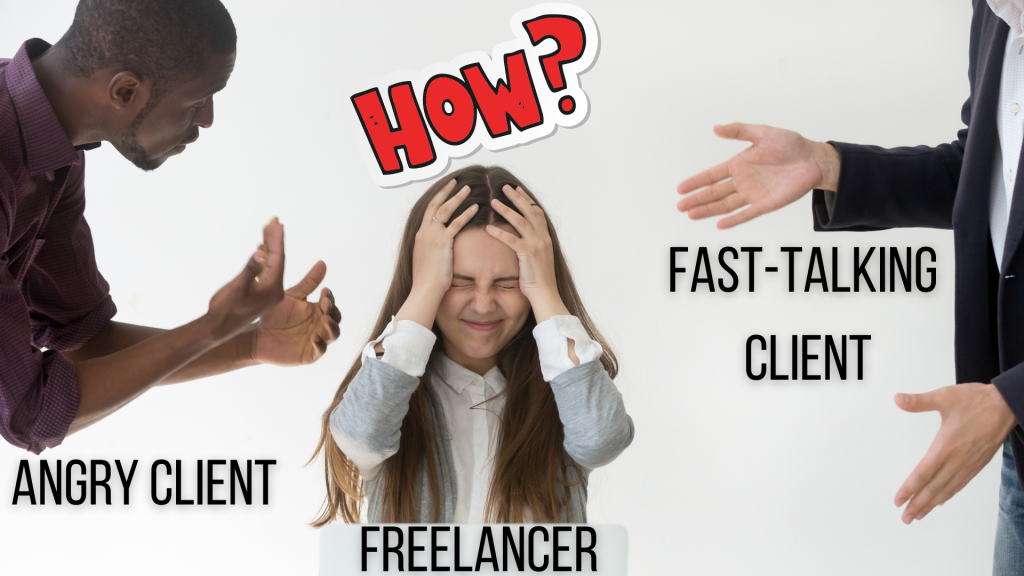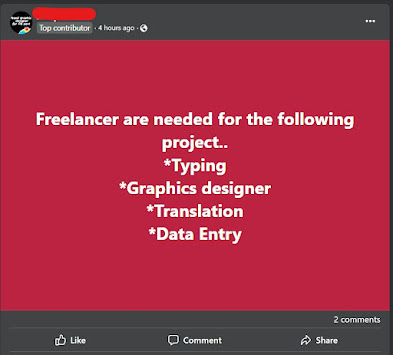How to Deal With an Angry or Fast-talking Client?

Hi Gino. I've been reading your blogs, and I need your advice. I've encountered two types of clients and have difficulty dealing with them. One is the always-angry type, and the other is difficult to understand because he talks too fast. I am a first-time freelancer and don't know how to handle these types of clients. Help me, please. - Arjit
How to deal with a difficult and emotional client?
For anyone with call centre experience, this is part of the new hire training. After months of talking to customers, understanding a client becomes second nature; this could be difficult if you're a first-time freelancer with no experience rephrasing and checking for understanding. But don't worry; I've got you covered.
The first thing you need to understand when talking to a customer is they have two kinds of needs:
- The Emotional Need
Customers must express their feelings. Their most common emotions include happiness, anger, frustration, and sadness. Because they had to put in a lot of effort to use or enjoy the product or service, the customer is emotionally invested in it. Customers want to express their emotions to others to feel fulfilled and satisfied with themselves. To successfully deal with any customer, any CSR (or, in your case, a freelancer) must first acknowledge the emotional need; this is where EMPATHY comes in.
What is EMPATHY in customer service?
Merriam-Webster defines empathy as "the action or capacity of understanding and expressing the state of mind of another." When confronted with this situation, the CSR or freelancer should put themselves in their customer's shoes; this is where EMPATHY comes in.
Examples of situations requiring empathy:
Customer: "My husband just died, and I'm still grieving. I can't deal with all the business letters right now. I'm looking for a freelancer who can respond to all these business emails."
Freelancer: "I'm deeply saddened to hear about your loss. I can only imagine what you're going through right now, but don't worry, I'm here to help, and I'll handle your business correspondence while you go through the difficult grieving process.."
Customer: "I am furious right now. I have been calling your customer service hotline because we have an emergency, and I needed your help to restore my service."
CSR: "Mr Johnson, please accept my apologies for the inconvenience. I'd be upset, too, if I was in an emergency and couldn't reach the people who should be assisting me. But I'm here now, and I'll be happy to help you with your problem.."
When talking to a client, it is necessary to address the emotional need of the customer first for two reasons:
(1) If you fail to acknowledge the emotional need (via an emphatic statement), it will come up again and again in the latter part of the conversation, and it will impact the efficiency of your issue resolution.
(2) When you connect with your customer on their level by addressing their emotional need first, you sound more human.
In the call centre industry, customer service representatives are given the training and coaching to handle these situations. Some centres include this as part of their scorecard. If a CSR fails to acknowledge the customer's emotional need with an emphatic response, they are invited for a one-on-one coaching session and possibly a demerit. Regardless of how harsh this may sound, you must understand that using emphatic statements is a VERY USEFUL TOOL when speaking with a customer. Why? Because it effectively addresses the customer's emotional need, you, the CSR or Freelancer, can get right to work without interruption.
- The Business Need
The easiest part is addressing the business need; you have the tools and training for this, and most of the time, the problem is simple to resolve. The customer's business requirements will be determined by the product or service you or your company provides.
Here are some examples:
- The customer would like assistance in extending their current contract
- Obtaining a new product or service
- Reporting an outage
- They have a few issues preventing them from fully utilizing the benefits of the product or service they purchased.
- Buyer's remorse or dissatisfaction
What can you do if the client is hard to understand?
It is often difficult for clients to speak slower and more clearly, partly due to habit and partly because they believe they are speaking clearly and that you understand them; this can happen when they are rushed or don't know how to communicate effectively with their words.
Here are five tried-and-true methods for ensuring that your client's instructions are completely understood:
- Request that your client speaks more slowly. If necessary, apologize for the inconvenience and inform the client that you are documenting the instruction and ensuring that nothing is missed to meet or exceed expectations.
- When the client pauses to check for understanding, restate what they said based on how you understood it; this is an excellent opportunity to determine whether you genuinely understood the instruction and for the client to correct you if you did not.
- Record the conversation. This is a simple but effective method because it allows you to repeat the instructions. Before you press the record button, ensure you have the client's permission.
- Use phrases such as "I apologize for missing that. Please repeat that." You can also say, "Your audio is coming in and going out. I didn't catch the last bit." You can also be truthful and say, "You were speaking too quickly. Could you please repeat the last part? Thank you very much."
- If at all possible, discuss the instruction via video call. This way, the client sees you and can tell you have a question based on your reaction or facial expression.
Let me address another critical issue many freelancers find intimidating: being truthful with the client. Being honest with the client can be challenging because we are afraid of being criticized, ridiculed, rejected, or judged as "slow-witted"; this insecurity can harm our professional image. Remember that you are in a professional relationship with your client, and they expect you to listen, understand, and ask questions. They are not in a business relationship with you to mock you. However, suppose you fail to ask relevant questions because you are afraid and end up with the incorrect or low-quality output. In that case, you will not only irritate the client for wasting their time and money, but you will also lose them, and they will leave you a negative rating and review.
Communication is essential. Aside from the abovementioned issues, you should openly communicate any issues or concerns with your client as a freelancer. However, avoid bombarding your client with questions every hour. The best way to approach the numerous problems is to collect and document them first, then request a meeting (alternatively, email it to them); this should give the client time to address the issues you encountered while working on the project.
Here is my final piece of advice. Never start a project if anything is unclear, from the contract, the fee, the work instructions, or the expected output; you must communicate these concerns before you begin, all for clarity and professionalism. I've always believed in "doing the right thing the first time," and this is where paraphrasing and asking relevant or clarifying questions come in handy.
Thank you for reading my blogs, Arjit, and I hope I was able to assist you.
Gino
.png)


Comments
Post a Comment